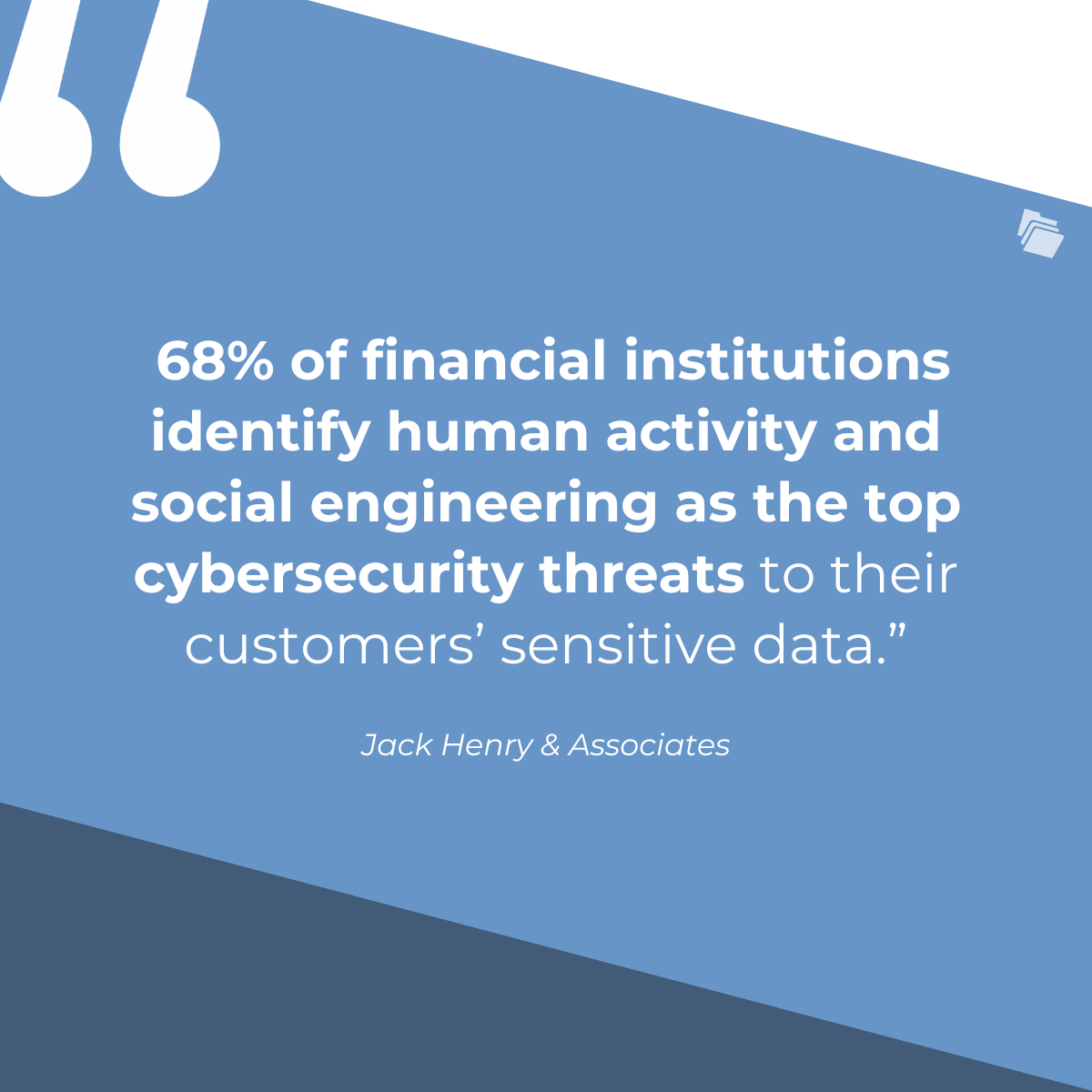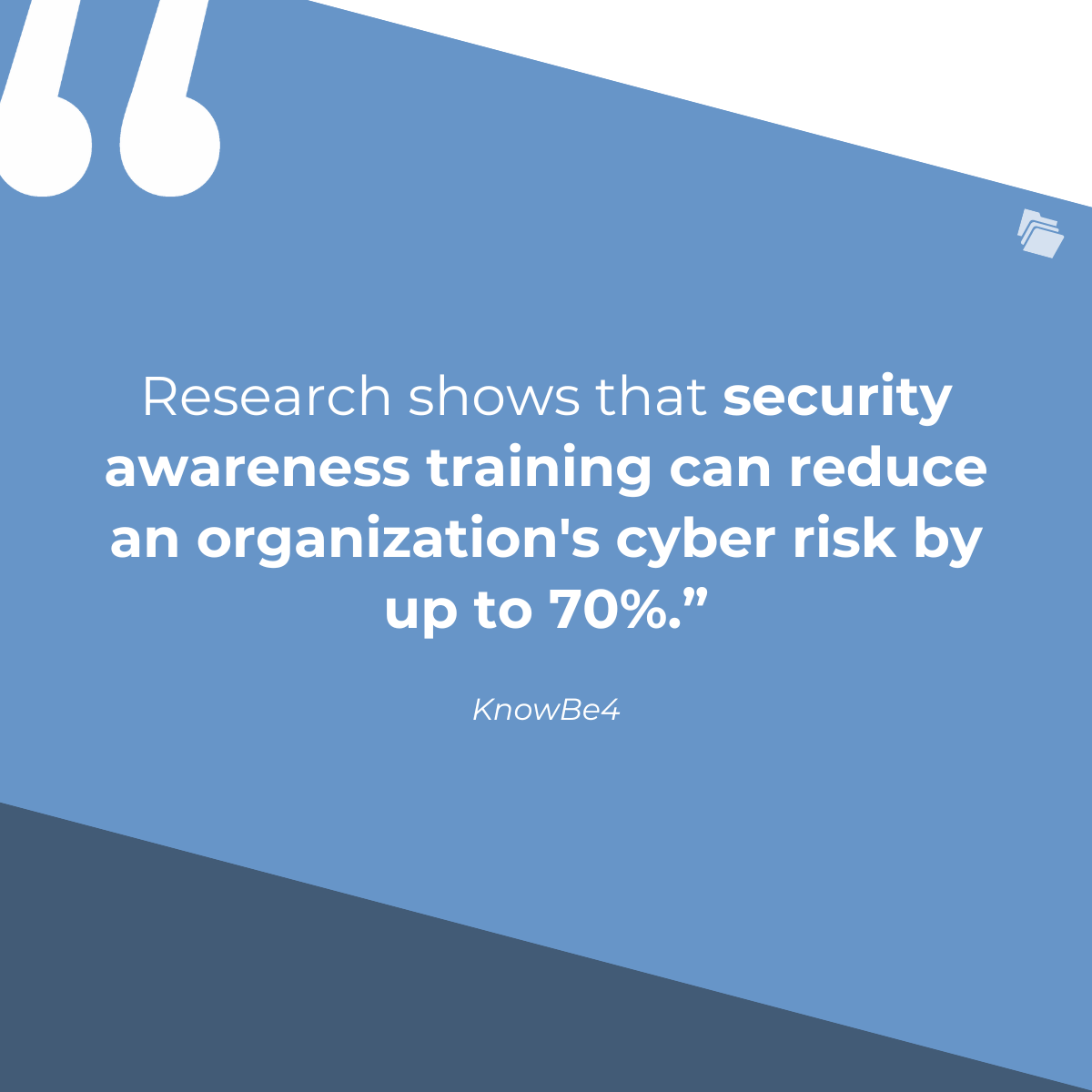Bank of America customers were targeted by a sprawling phishing email scam. These fraudulent emails warned of suspicious account activity, urging customers to click malicious links or provide sensitive information.
While this scam type isn’t new, the financial damage and customer concerns the Bank of America phishing email scam caused are as real as ever. Already, 68% of financial institutions identify human activity and social engineering as the top cybersecurity threats to their customers’ sensitive data. As cybercriminals continue to refine their tactics, banks must stay ahead of the curve and ensure that their security measures evolve to meet new challenges.
With financial institutions now on even higher alert, both businesses and consumers must stay vigilant and informed. This guide covers the top five lessons banks and customers should take away from this incident.

Lesson 1: The Need for AI-Driven Phishing Detection
Phishing attacks are becoming more sophisticated, making the use of advanced technologies like AI and machine learning (ML) crucial for effective detection and prevention. These tools excel at identifying and blocking phishing attempts by analyzing:
- Email content
- Detecting anomalies
- Establishing user communication patterns
AI-driven detectors use ML algorithms to compare emails against known phishing templates, spotting red flags such as misspelled domains or unusual requests for personal information. Over time, AI systems continuously learn from new data, improving their ability to accurately detect and block phishing emails.
Organizations that have implemented AI and ML tools for phishing detection have seen a 40% reduction in phishing attack success rates. Beyond simply identifying threats, these advanced systems also protect personally identifiable information (PII). By filtering out malicious emails designed to deceive users, AI-driven detectors act as a strong barrier against data breaches. They adapt to evolving threats, ensuring that even the most sophisticated phishing attempts — especially those crafted by generative AI — are intercepted before causing harm.

Lesson 2: The Power of Continuous Employee Cybersecurity Training
As cyber threats grow in both number and sophistication, banks must ensure that their employees stay informed and vigilant. Regular cybersecurity training equips employees with the skills to recognize phishing emails and reinforces the importance of following established reporting protocols. It also ensures they know how to respond swiftly and effectively when incidents occur.
For today’s security environment, effective employee training in financial services must include:
A) Phishing Identification and Prevention
Training employees to recognize phishing emails by identifying suspicious links, attachments, and requests for sensitive information.
B) Incident Reporting Protocols
Ensuring employees are familiar with the procedures for promptly reporting potential cybersecurity incidents to the appropriate security teams.
C) Secure Data Handling Practices
Teaching employees how to handle sensitive information securely, including encrypting data and managing passwords effectively.
D) Regular Updates and Continuous Learning
Providing ongoing education to keep employees informed about the latest cybersecurity threats and best practices.
The impact of such training is clear. Research shows that security awareness training can reduce an organization's cyber risk by up to 70%. By fostering a culture of cybersecurity awareness, organizations both reduce the likelihood of breaches and empower their employees to act as their first line of defense against cyber threats.

Lesson 3: The Importance of Customer Education
For financial service providers, training and educating customers on identifying cyber threats is just as important as preparing employees — even though it may be harder to enforce. However, financial institutions can take effective steps to empower their employees:
A) Explain the Importance of Verifying Email Sources
Encourage customers to always check the sender’s email address carefully to ensure it matches legitimate domain names. Phishing emails often use addresses that look similar but have subtle differences.
B) Warn Against Unsolicited Requests for Personal Information
Teach customers that legitimate organizations will never ask for sensitive information like passwords, Social Security numbers, or credit card details via email or text messages.
C) Promote Hovering Over Links
Advise customers to hover over links in emails to view the full URL before clicking. This helps them avoid fraudulent sites that mimic legitimate ones but have slight URL variations or hidden URLs.
D) Encourage Multi-Factor Authentication (MFA)
Suggest that customers enable MFA on their accounts. MFA adds an extra layer of security, even if login details are compromised through phishing.
E) Provide Examples of Common Phishing Tactics
Share examples of typical phishing email content, such as urgent requests for action, misspellings, or strange attachments, to help customers recognize red flags.
F) Advise Against Downloading Attachments from Unknown Sources
Educate customers to avoid downloading or opening attachments from unexpected or unknown senders, as these could contain malware.
Lesson 4: The Importance of an Incident Response Plan
With human error accounting for 88% of successful cybersecurity exploits, employees need to be trained not only on how to prevent incidents but also how to respond if they occur. This is where a detailed incident response plan comes into play.
An effective incident response plan outlines specific steps for identifying, containing, and eliminating threats while minimizing damage to the organization. It should also include clear guidelines for communication during and after the incident, making sure that all stakeholders — including customers — are kept informed.
Key elements of the plan should include:
- Technical remediation: who will address and resolve the technical issues?
- Legal considerations: who will handle legal matters and ensure compliance?
- Public relations: who will manage communication with the public and the media?
Additionally, conducting regular drills and simulations can help ensure that the plan is effective. These practices help employees act quickly and efficiently during a real cyber event. A comprehensive response plan approach allows organizations to not only respond to incidents effectively but also recover swiftly, minimizing long-term impacts on operations and reputation.
Lesson 5: The Value of Transparent Communication
Today’s customers are more aware of cybersecurity standards and more curious about data handling than they were a few years ago. Transparent communication has become the baseline for maintaining customer trust and loyalty after serious security events. As customers become more discerning, their trust in an institution hinges significantly on how openly and honestly it communicates during such events.
A staggering 76% of consumers say they would not buy from a company they do not trust with their data. Additionally, 37% have switched providers due to concerns on data privacy practices. By prioritizing openness and honesty, financial institutions can strengthen their relationships with customers, even in the face of potential breaches. Transparent communication is no longer just a best practice — it is a critical component of customer retention and long-term success in the financial industry.
Putting These Lessons into Action
Cyber threats are evolving rapidly, but the value of human response in data protection remains constant. As threats become both smarter and easier to produce, financial institutions cannot afford to ignore lessons learned from past incidents.
To learn more about protecting customer PII, request a demo of FileInvite today.

Related Posts: